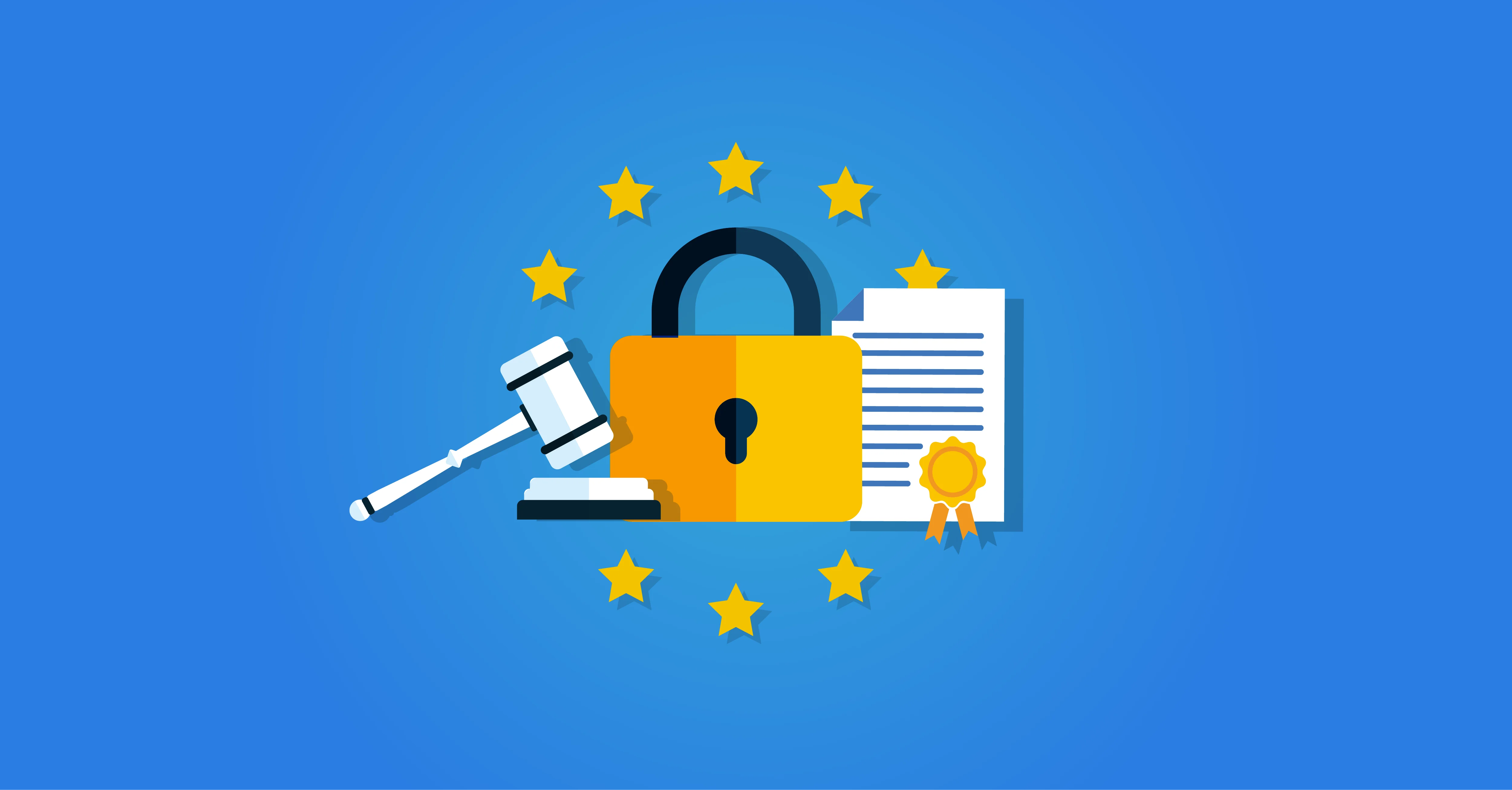
Compliance
What is compliance?
Within organisations, the meaning of compliance relates to the extent to which you adhere to laws and guidelines applicable to that organisation.
Compliance is often thought of primarily in terms of financial rules and obligations, but a company or government institution must also be compliant with privacy guidelines, health and safety regulations, and environmental laws. Compliance is not only about adhering to official laws; it can also involve sector-specific agreements or internally developed guidelines. By demonstrably being compliant, you not only avoid sanctions but also qualify yourself as a reliable partner or customer. Many organisations, therefore, have active compliance programmes that include extensive training, reporting, and audits.
Although compliance often brings to mind financial regulations and obligations, businesses and governmental bodies must also comply with privacy guidelines, health and safety regulations, and environmental laws. Compliance isn't limited to official legislation; it can also encompass sector-specific agreements or internally developed guidelines. By demonstrably meeting these standards, organisations not only avoid penalties but also establish themselves as trustworthy partners or suppliers. Many organisations therefore implement robust compliance programmes that include comprehensive training, detailed reporting, and regular audits.
What is a compliance officer?
Particularly in financial organisations, the compliance function is centralized in a role known as a compliance officer. This officer is responsible for ensuring that the organisation as a whole complies with laws and regulations. This role is mandatory in banks, insurance companies, and pension funds that are under the supervision of regulatory authorities like the FCA in the UK or the AFM in the Netherlands. The responsibilities of a compliance officer include:
Monitoring compliance with laws and regulations, as well as internal policies.
Overseeing employees' private stock transactions.
Upholding the integrity of both the organisation and its employees.
Independently investigating incidents and reporting them to management or regulatory authorities.
Developing and implementing a compliance programme that provides training and policy guidelines for management and employees.
The focus of compliance officers on financial aspects is due to the significant impact of financial irregularities on businesses and markets; consider large-scale frauds, money laundering, or market manipulation. Concurrently, there are a growing number of other areas—from environmental regulations to privacy—where business risks are becoming increasingly more significant. For example, consider large-scale data breaches that could expose the sensitive personal information of millions, often with substantial financial repercussions. As a result, alongside traditional compliance officers, other similar roles, such as 'internal watchdogs,' are emerging. One such position is the Data Protection Officer, who ensures that personal data within organisations is processed securely and correctly, and also maintains liaisons with the Data Protection Authority (DPA).

What is an Audit?
An audit is a powerful tool for demonstrating compliance. During an audit processes, methodologies, and reports are evaluated to verify whether they comply with relevant laws and guidelines. An audit usually focuses on one specific law or guideline and evaluates compliance in a structured manner through document reviews, reports, and interviews with employees. For instance, a financial audit conducted by an accountant might verify whether financial statements comply with the applicable regulations. Similarly, an information security audit would evaluate how well the organisation meets established security plans and, where applicable, the industry standards on the topic. Audits can be either internal or external:
An internal audit is conducted by in-house specialists with the goal of providing the organisation with an understanding of its compliance and necessary improvements.
An external audit is carried out by a completely independent and qualified auditor, making the audit results more authoritative and useful for purposes such as an official certification process.
That does not make internal audits any less valuable. Often, internal audits are conducted as a preparation for external audits. Moreover, professional organisations always have internal audits carried out by professionals or departments with sufficient authority and an independent position within the organisation; for example, by their own compliance department. This ensures that the outcomes are taken seriously.
Which laws are important for information security?
Information security and privacy are becoming increasingly important. When planning information security, organisations rely more on general security standards and privacy laws. Since 2016, for instance, all organisations must be compliant with the GDPR. Many organisations also base their information security on standards such as ISO 27001. Compliance with these can be demonstrated through certification. Additionally, many sectors have developed their own standards derived from ISO 27001, such as the BIO and NEN 7510 (information security within healthcare). In the educational sector, specific standards have also been established for information security and privacy.
Why should you aim for compliance?
Sector-specific standards such as BIO or NEN 7510 are mandatory for organisations within those sectors. Compliance is not optional, and for NEN 7510, healthcare institutions are required to obtain official certification. Compliance with the GDPR is also mandatory for all. While it is not compulsory for commercial organisations to meet ISO 27001 standards, achieving such security compliance provides considerable benefits. Using your own set of security rules can make it challenging to prove that your information security and privacy protection meet external expectations. Organising your security plans according to widely accepted standards allows for an objective assessment of your information security. Moreover, if an organisation is officially certified, customers and partners are likely to trust the external auditor’s assessment, effectively checking the compliance box.
Tips for ensuring compliance
A key tool for ensuring compliance with relevant laws and guidelines within organisations is so-called compliance management software. This term covers applications for managing risks, recording and managing policy rules, and assigning tasks and responsibilities. Reporting tools and business dashboards are also vital tools for your compliance team.
To specifically comply with information security guidelines, Identity and Access Management (IAM) software is crucial. For instance, with HelloID, you can automate the issuance of accounts and access rights as much as possible based on an individual's role(s) within the organisation. This approach ensures compliance with the 'Principle of Least Privilege', which is a fundamental concept in many security standards today. It ensures that individuals only have access to the applications and data they need to perform their work.
Furthermore, all access rights and changes are fully recorded and continuously monitored in such a system. HelloID, for example, logs all changes to business rules, all individual changes to access rights (including the requesters and employees involved), and all attempts to access the infrastructure. This ensures that this aspect of your compliance can be demonstrated at any moment, and provides a readily available audit trail in the event of incidents such as data breaches. Data is accessible through standard reports, but clients can also configure their own analyses. With HelloID, you have all the necessary tools for internal security assessments, external audits, and formal certification processes.
Tips for maintaining compliance
Compliance begins by familiarising yourself with the relevant laws and guidelines, then implementing your processes and systems in accordance with these rules. But how do you then maintain compliance? Here are a few tips:
Regular risk assessments. Many standards today are now risk-based. This means that you shouldn't just indiscriminately implement various rules. Instead, you need to continually assess which elements within your organisation actually pose risks and focus your efforts there. It is also important to regularly review this. If new risks arise, then you must adapt your processes and systems to remain compliant.
Management needs to be accountable for compliance. Compliance with laws and regulations should not be a standalone task performed by a few specialists within a staff department. It involves key processes of your organisation and should be regularly reviewed and discussed within the management team.
Audits and monitoring. Even if audits are not mandatory, it is wise to establish a professional control cycle within your organisation. This allows you to regularly check whether you are still compliant and determine if any corrective measures are necessary.
If you are interested in how HelloID can enhance your compliance, we offer whitepapers detailing our support for various standards, including ISO 27001, BIO, NEN 7510, and educational norms. Our business consultants would be happy to provide you with more information.
Related Articles
- Copilot: Protect your data with the right IAM Policy
- On-premise vs cloud
- Developing a strong IAM strategy
- What is a good sequence for an IAM implementation?
- Additional connectors
- Selecting the right IAM solution
- How to write a business case for IAM
- How an Access Management Solution Helps Your Organisation
- How a Service Automation Solution Helps Your Organisation
- How a User Provisioning Solution Helps Your Organisation